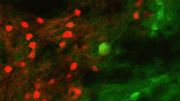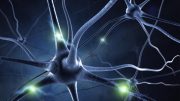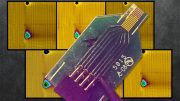
Champalimaud Research’s Learning Lab has provided significant evidence of how the brain’s internal clockwork guides behavior. Their study manipulated neural activity patterns in rats, warping their perception of time duration. This research not only challenges conventional understanding of time measurement but also has potential therapeutic implications for diseases like Parkinson’s and Huntington’s, and for robotics and learning algorithms.
The Learning Lab at Champalimaud Research has discovered a way to manipulate the brain’s perception of time by controlling neural activity in rats. Their research, which has potential applications in treating diseases like Parkinson’s and Huntington’s, could also influence the fields of robotics and learning algorithms.
From Aristotle’s musings on the nature of time to Einstein’s theory of relativity, humanity has long pondered: how do we perceive and understand time? The theory of relativity posits that time can stretch and contract, a phenomenon known as time dilation. Just as the cosmos warps time, our neural circuits can stretch and compress our subjective experience of time. As Einstein famously quipped, “Put your hand on a hot stove for a minute, and it seems like an hour. Sit with a pretty girl for an hour, and it seems like a minute.”
In new work from Champalimaud Research’s Learning Lab published in the journal Nature Neuroscience, scientists artificially slowed down, or sped up, patterns of neural activity in rats, warping their judgment of time duration and providing the most compelling causal evidence so far for how the brain’s inner clockwork guides behavior.
In contrast to the more familiar circadian clocks that govern our 24-hour biological rhythms and shape our daily lives, from sleep-wake cycles to metabolism, much less is known about how the body measures time on the scale of seconds to minutes. The study focused precisely on this seconds-to-minutes timescale at which much of our behavior unfolds, whether you’re waiting at a stop light or serving a tennis ball.
The Population Clock Hypothesis
Unlike the exact ticking of a computer’s centralized clock, our brains maintain a decentralized and flexible sense of time, thought to be shaped by the dynamics of neuronal networks dispersed across the brain. In this “population clock” hypothesis, our brains keep time by relying on consistent patterns of activity evolving in groups of neurons during behavior.
Joe Paton, the study’s senior author, likens this to dropping a stone into a pond. “Each time a stone is dropped, it creates ripples that radiate outward on the surface in a repeatable pattern. By examining the patterns and positions of these ripples, one can deduce when and where the stone was dropped into the water.”

Scientists artificially slowed down, or sped up, patterns of neural activity in rats, warping their judgment of time duration. Credit: Created by Hedi Young with the assistance of Stable Diffusion
“Just as the speed at which the ripples move can vary, the pace at which these activity patterns progress in neural populations can also shift. Our lab was one of the first to demonstrate a tight correlation between how fast or slow these neural ‘ripples’ evolve and time-dependent decisions.”
The researchers trained rats to distinguish between different intervals of time. They found that activity in the striatum, a deep brain region, follows predictable patterns that change at different speeds: when animals report a given time interval as longer, the activity evolves faster, and when they report it as shorter, the activity evolves more slowly.
However, correlation does not imply causation. “We wanted to test whether variability in the speed of striatal population dynamics merely correlates with or directly regulates timing behavior. To do that, we needed a way to experimentally manipulate these dynamics as animals reported timing judgments.”
Unravelling Time with Temperature
“Never throw away old tools,” smiles Tiago Monteiro, one of the study’s lead authors. To establish causation, the team turned to an old-school technique in the neuroscientist’s toolbox: temperature. “Temperature has been used in previous studies to manipulate the temporal dynamics of behaviors, such as bird song. Cooling a specific brain region slows down the song, while warming speeds it up, without altering its structure. It’s akin to changing the tempo of a musical piece without affecting the notes themselves. We thought temperature could be ideal as it would potentially allow us to change the speed of neural dynamics without disrupting its pattern.”
To test this tool in rats, they developed a custom thermoelectric device to warm or cool the striatum focally, while simultaneously recording neural activity. In these experiments, the rats were anesthetized, so the researchers employed optogenetics — a technique that uses light to stimulate specific cells — to create waves of activity in the otherwise dormant striatum, much like dropping the stone into the pond. Notes co-lead author Margarida Pexirra, “We were careful not to cool the area too much, as it would shut down activity, or warm it too much, risking irreversible damage.” They found that indeed cooling dilated the pattern of activity, while warming contracted it, without perturbing the pattern itself.
“Temperature then gave us a knob with which to stretch or contract neural activity in time, so we applied this manipulation in the context of behavior,” says Filipe Rodrigues, another lead author in the study. “We trained animals to report whether the interval between two tones was shorter or longer than 1.5 seconds. When we cooled the striatum, they were more likely to say a given interval was short. When we warmed it, they were more likely to say that it was long.” For example, heating up the striatum sped up striatal population dynamics, similar to accelerating the movement of a clock’s hands, causing the rats to judge a given time interval as being longer than it really was.
Two Brain Systems for Motor Control
“Surprisingly,” adds Paton, “even though the striatum coordinates motor control, slowing down or speeding up its patterns of activity doesn’t correspondingly slow down or speed up the animals’ movements in the task. This got us thinking more deeply about the nature of behavior control in general. Even the simplest organisms face two fundamental challenges when it comes to controlling movement. First, they have to choose from among different potential actions — for instance, whether to move forward or backward. Second, once they’ve chosen an action, they need to be able to adjust and control it continuously to ensure it’s carried out effectively. These basic problems apply to all kinds of organisms, from worms to humans.”
The team’s findings indicate that the striatum is critical for resolving the first challenge — determining ‘what’ to do and ‘when’ — while the second challenge of ‘how’ to control the ongoing movement is left to other brain structures. In a separate study, the team is now exploring the cerebellum, which houses more than half of the brain’s neurons, and is associated with continuous, moment-by-moment execution of our actions. “Interestingly,” Paton reveals, “our preliminary data shows that applying temperature manipulations to the cerebellum, unlike the striatum, does affect continuous movement control.”
As Paton points out, “You can see this division of labor between the two brain systems in movement disorders like Parkinson’s and cerebellar ataxia.”
Parkinson’s, a disease that affects the striatum, often hampers patients’ ability to self-initiate motor plans, such as walking. Yet providing sensory cues, like lines of tape on the ground, can facilitate walking. These cues likely engage other brain regions, such as the cerebellum and cortex, which are still intact and can effectively manage continuous movement. By contrast, patients with cerebellar damage struggle with executing smooth and coordinated movements, but not necessarily with the initiation or transition between movements.
Implications and Future Directions
By providing new insights into the causal relationship between neural activity and timing function, the team’s results may advance the development of novel therapeutic targets for debilitating diseases such as Parkinson’s and Huntington’s, which involve time-related symptoms and compromised striatum. Additionally, by highlighting a more specific role for the striatum in discrete, as opposed to continuous, motor control, the results could also influence algorithmic frameworks used in robotics and learning.
“Ironically, for a paper about time, this study was years in the making,” remarks Monteiro. “But there’s plenty more mystery to unravel. What brain circuits create these timekeeping ripples of activity in the first place? What computations, other than keeping time, might such ripples perform? How do they help us adapt and respond intelligently to our environment? To answer these questions, we’re going to need more of something we’ve been studying…time.”
Reference: “Using temperature to analyze the neural basis of a time-based decision” by Tiago Monteiro, Filipe S. Rodrigues, Margarida Pexirra, Bruno F. Cruz, Ana I. Gonçalves, Pavel E. Rueda-Orozco and Joseph J. Paton, 13 July 2023, Nature Neuroscience.
DOI: 10.1038/s41593-023-01378-5









Be the first to comment on "Scientists Discover a Way To Manipulate the Brain’s Perception of Time"